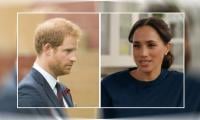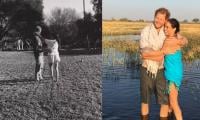Nawroz—Iranian New Year celebrated
LAHORE: Students of different universities, colleges and institutions and civil society activists celebrated Nawroz, one of the biggest festivals celebrated in Iran, Iraq, the Central Asian Republics and Afghanistan to mark the first day of spring and the beginning of the year in the Persian calendar.
“It is calculated according to a solar calendar, coinciding with the vernal (spring) equinox and with this coming year marking 1397. Nawroz, which many associates with the Parsi or Zoroastrian culture, is actually more of an Iranian celebration. It means ‘new day’ in Persian and is the Iranian New Year. However, it is also an event that is celebrated by Afghans, Tajiks, Uzbeks, some Iraqis and other countries influenced by ancient Persia”, said Saeeda, representing Hazara community.
“Nawroz is traditionally a time spent with family and is celebrated by the gathering of the immediate family around the Haft Seen, a decorated spread, for the exact moment of the New Year followed by an exchange of presents. It is customary for the family to gather at the home of the family’s eldest for a sumptuous lunch or dinner which has to include Sabzi Polo Mahi (herbed rice with fish),” she added.
While explaining the traditions, Arif, a student, said, “The next 13 days after Nawroz are a time to visit family and friends at their homes, also known as Eid Deedani, literally meaning seeing Eid. Eid Deedani is a particularly happy occasion for children, who get to pocket brand new currency kept for them inside the Quran by the house owner as gifts.”
“The Haft Seen is the official Nawroz decoration that each house will prepare in their own style on a table and will include at least seven items that in Farsi begin with the letter ‘seen’ or s, with every single item symbolising something. These include sirka (vinegar), saib (apple), senjed (dry fruit from lotus tree), sabzeh (sprouts), seer (garlic), somaq (sumac fruit), samanu (a sweet pudding). Additional items that begin with the letter “s” that are commonly seen on the table as part of the sofreh (spread) include sekeh (coin) and sonbol (hyacinth),” he further informed.
“Lahore is so multicultural city but there are not so many Iranian hotspots where religious-cultural activities can be arranged; I really miss my home at Nawroz,” said Arif, organiser of the event.
Punjabi, Pashtun, Sindhi, Baloch and students of Khyber Pakhtunkhwa presented their folk dances and celebrated the Nawroz with peace, love and harmony. “I will be spending Nawroz with friends who are like my family here. We will have a gathering, which will definitely include sabzi polo mahi [herbed rice and fish],” said Sajida.Atiqa, an activist, said this is our culture. We welcome the Nawroz with our other friends so they don’t feel homesick.
Aima, co-organiser of the event said every person has a right to perform his/her cultural and religious obligations. This is a gathering of such diverse cultures but you can see that everyone is enjoying and having a great time. Our young generation is getting very depressed by the limitations and restrictions being imposed on them. These events give them an opportunity to learn from other cultures and see their traditions.
-
 North West Raps About Piercings, Tattoos And Skipping School In New Song
North West Raps About Piercings, Tattoos And Skipping School In New Song -
 Teddi Mellencamp Shares Hopeful Health Update Amid Cancer Battle: 'Cloud Is Lifting'
Teddi Mellencamp Shares Hopeful Health Update Amid Cancer Battle: 'Cloud Is Lifting' -
 Prince William Makes Clear The Conditions He Has For Meeting Prince Harry
Prince William Makes Clear The Conditions He Has For Meeting Prince Harry -
 Sara Foster Slams Age Gap Relationship After 'blah' George Clooney Date
Sara Foster Slams Age Gap Relationship After 'blah' George Clooney Date -
 Jennifer Garner Recalls Enduring Ben Affleck’s Intense Beyoncé ‘Halo’ Phase
Jennifer Garner Recalls Enduring Ben Affleck’s Intense Beyoncé ‘Halo’ Phase -
 Prince Harry’s Mental Health Ends Up At Stake As Meghan Moves Him To 'second Fiddle'
Prince Harry’s Mental Health Ends Up At Stake As Meghan Moves Him To 'second Fiddle' -
 Bradley Cooper On Who His Mother Thinks Is The World’s Best Actor
Bradley Cooper On Who His Mother Thinks Is The World’s Best Actor -
 Meghan Markle Offers Glimpse Into Intimate Dance Moment With Harry Amid Split Rumors
Meghan Markle Offers Glimpse Into Intimate Dance Moment With Harry Amid Split Rumors -
 Jon Bon Jovi Joins The Viral 2016 Throwback Trend With Nostalgic Photos
Jon Bon Jovi Joins The Viral 2016 Throwback Trend With Nostalgic Photos -
 Kate Middleton Hailed For Her Lack Of ‘obligation’ As Well As Altruistic, Selfless Qualities
Kate Middleton Hailed For Her Lack Of ‘obligation’ As Well As Altruistic, Selfless Qualities -
 Jason Momoa Says Being With Beau Adria Arjona Feels 'perfect'
Jason Momoa Says Being With Beau Adria Arjona Feels 'perfect' -
 Idris Elba Says One Mix-up Nearly Cost Him A Knighthood From King Charles
Idris Elba Says One Mix-up Nearly Cost Him A Knighthood From King Charles -
 Andrew Mountbatten Windsor Incurs Anger Of Biggest Royal
Andrew Mountbatten Windsor Incurs Anger Of Biggest Royal -
 Megan Fox, Machine Gun Kelly's Relationship 'is Just About Co-parenting'
Megan Fox, Machine Gun Kelly's Relationship 'is Just About Co-parenting' -
 Prince Harry, Meghan Markle Warned They Can’t Fool Brits Because It Won’t Land
Prince Harry, Meghan Markle Warned They Can’t Fool Brits Because It Won’t Land -
 South Korea’s Ex-president Yoon Suk Yeol, Sentenced To 5 Years In Prison: Key Details Explained
South Korea’s Ex-president Yoon Suk Yeol, Sentenced To 5 Years In Prison: Key Details Explained



